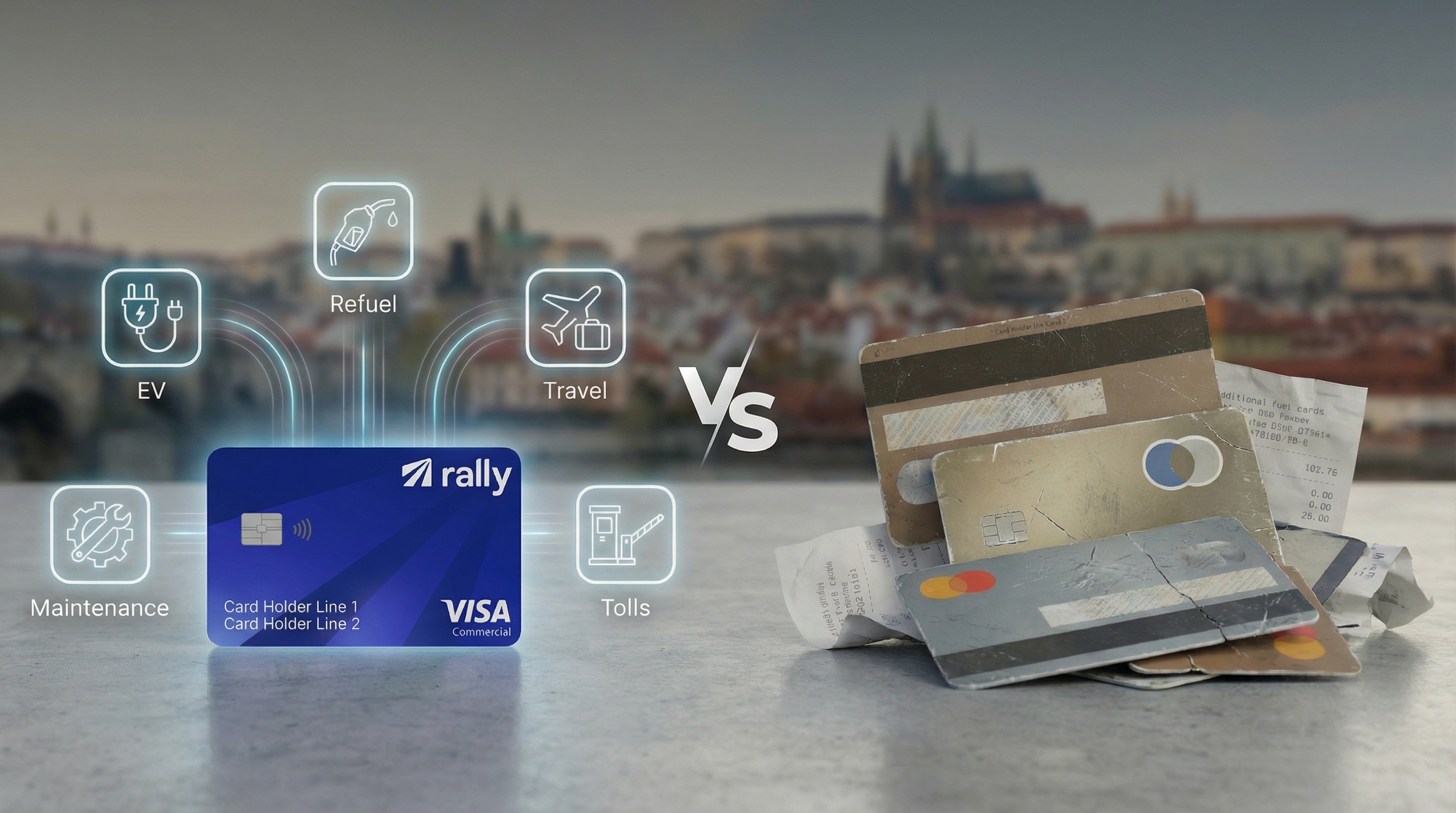Why Modern Fleet Cards Beat Traditional Fuel Cards Every Time
Getting ripped off at the pump isn't fun. But that's exactly what happens with most traditional fuel cards.
You pull up to Shell, see €1.60 on the display, fill up your tank... then get an invoice for €1.80. Welcome to the wonderful world of "list pricing" – where fuel card companies charge you higher prices instead of what's actually on the pump.
It's like ordering a €10 burger and getting charged €12 because the restaurant decided their "list price" is higher than the menu. Ridiculous? Absolutely. Common with fuel cards? Unfortunately, yes.

The List Price Scam That's Costing Your Fleet Thousands
Here's how traditional fuel cards work: Instead of always charging you the pump price (you know, the one everyone else pays), they often charge a "list price" set by the card company. This price can be €0.10–€0.30 higher per liter than what's displayed at the station.
In fact, one of the largest European fuel card providers openly admits on their website that at BP and Shell stations, you'll pay a "relatively high daily price that does not correspond to the price displayed at the service station." They're literally telling you they'll overcharge you.
The math is brutal:
- €0.20 extra per liter
- 50 liters per fill-up = €10 extra per tank
- Fill up twice a week = €1,040 extra per year, per vehicle
For a 10-vehicle fleet, that's over €10,000 in hidden costs annually. Money that should stay in your pocket.
Modern Fleet Cards: What You See Is What You Pay
Modern fleet cards work exactly like your personal credit card. They're accepted everywhere (because they run on Visa/Mastercard networks), and you pay the actual pump price. No mysterious markups. No surprise invoices.
Rally's Visa card is the perfect example:
- Accepted at 100% of European fuel stations
- You pay the exact pump price – always
- Zero hidden fees or transaction charges
- Real-time transaction data
When diesel costs €1.60 at the pump, your invoice shows €1.60. Revolutionary concept, right?
Country-by-Country: How Much You're Actually Overpaying
Germany: The List Price Capital of Europe
Germany is where list pricing does the most damage. Aral and Shell control 30% of all stations and both use daily list prices that can be €0.20–€0.30 higher than pump prices.
One of our German customers discovered they were paying €0.19/L more than the pump price with their previous fuel card. They called it "an expensive lesson" – one you don't need to learn.
United Kingdom: Missing Out on Supermarket Savings
UK supermarkets (Tesco, Asda, Sainsbury's) sell 44% of all fuel despite having just 16% of stations. Why? They're 5–10 pence per liter cheaper than branded stations.
Traditional fuel cards often exclude supermarkets or charge extra fees to use them. Rally lets you fuel anywhere – including every supermarket forecourt in the country.
France: Locked Out of Hypermarket Deals
French hypermarkets (E.Leclerc, Carrefour) dominate 60% of fuel sales by volume with prices €0.05–€0.10 cheaper than branded stations. Many traditional fuel cards can't access these savings.
Spain: Avoiding the "Lista" Price Trap
Spanish fuel cards often use "precio lista" at major networks like Repsol. Some fuel card even admit you'll "pay a different price than the one displayed at the pumps" at these stations.
Modern cards skip this entirely and simply let you pay Repsol's actual pump price, not some inflated list price.
The Hidden Fees That Make Everything Worse
List pricing is just the beginning. Traditional fuel cards love adding fees:
- Monthly card fees (up to €5 per card)
- Transaction fees (€0.50–2.00 per fill-up)
- Network access fees
- Paper invoice charges
- Inactivity penalties
These fees can add 1–2 cents per liter on top of already inflated fuel costs. Death by a thousand cuts.
Modern cards like Rally eliminate this fee circus entirely. No monthly fees. No transaction charges. No hidden surprises.
5 Ways Modern Fuel Cards Save Your Fleet Money
1. True Market Pricing: You pay what everyone else pays – the actual pump price. No markups, no "list prices," no games.
2. Maximum Coverage: Fuel at any station that offers the best price. Not locked into expensive networks or brands.
3. Supermarket Access: Take advantage of cheaper supermarket fuel without restrictions or extra fees.
4. Zero Hidden Fees: What you see is what you get. No surprise charges eating into your budget.
5. Real-Time Control: Track spending instantly, set limits, and guide drivers to cheaper stations using live price data.
Making the Switch: What Rally Customers Are Saving
Rally's analysis shows customers save 10% on average after switching from traditional fuel cards. That's not from tiny rebates or complicated discount schemes – it's from eliminating the hidden premiums and fees that traditional cards pile on.
Real example: A van using 2,000 liters per year saves ~€400 annually just by avoiding list price overcharging. Multiply that across your fleet and the savings add up fast.
The Bottom Line: Stop Paying More for Less
Traditional fuel cards had their time. That time is over.
List pricing made sense when fuel markets were less competitive and digital payments were rare. But today? It's just a way for card companies to extract extra profit from your fuel budget.
Modern fleet cards cards offer everything you actually want:
- Transparent pricing that matches the pump
- Universal acceptance at every station
- Access to the cheapest fuel options
- Real-time data and control
- Zero hidden fees
Your drivers get convenience. Your finance team gets clarity. Your bottom line gets better.
The choice is simple: keep paying inflated "list prices" and mystery fees, or switch to transparent pump pricing and keep more money in your business.





